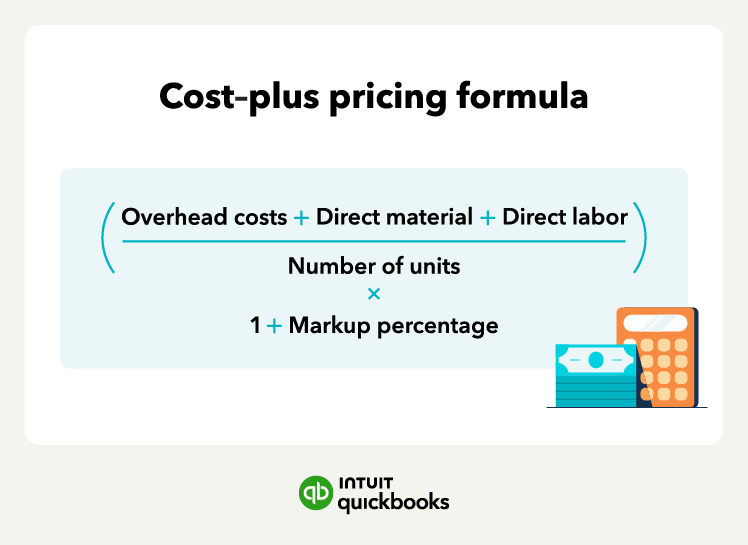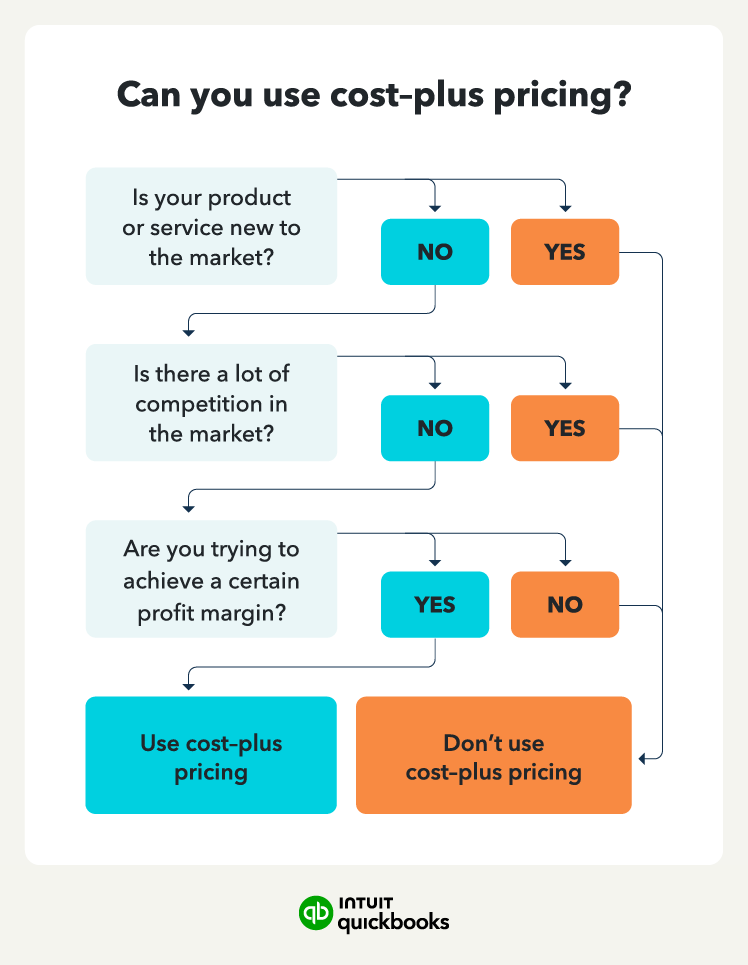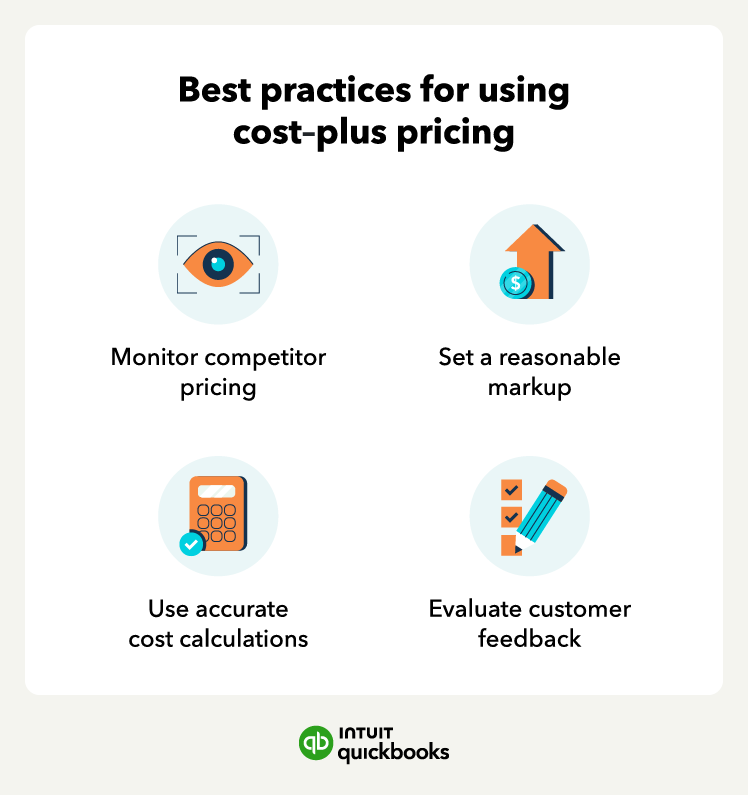Cost-plus pricing example
The following cost-plus pricing examples show how to apply the cost price formula in two different instances:
Manufacturer example
Say a manufacturer makes 100,000 picture frames for sale. The entire production incurs $150,000 in direct material costs, $250,000 in direct labor costs, and $100,000 in overhead costs. Here’s how the manufacturer calculates cost-plus pricing:
- Add up the total cost of producing the picture frames:
- $150,000 + $250,000 + $100,000 = $500,000
- Divide the total cost by the number of produced units to get the cost per product:
- $500,000 / 100,000 = $5
- Multiply the cost per product by the markup percentage. At a 100% markup percentage, the calculation is:
- $5 * (1 + 1.00) = $10
The resulting cost-plus price for one picture frame is $10, which includes a profit of $5.
Retailer example
Now consider a small grocery store that uses variable cost-plus pricing to profit from selling wholesale goods. It purchases 1,000 bottles of juice at wholesale for $4,500. It expects to sell the water within a week. Here’s how it calculates its cost-plus pricing:
- The total cost of the water is $4,500.
- Divide the total cost by the number of units: to get the cost per product:
- $4,500 / 1,000 = $4.50
- Groceries operate in an industry with competitive prices and high-volume sales, so they limit their markup percentage to 15%. The calculation for the final selling price is:
- $4.50 * (1 + 0.15) = $5.18 per bottle
For the grocery store, the variable cost-plus pricing for a bottle of juice is about $5.18 (with a profit of $0.68).
Pros and cons of cost-plus pricing
Cost-plus pricing offers several advantages for both companies and consumers. The three most common ones are:
- Simple to use: One of the most popular reasons for using cost-plus pricing is that it requires the least effort. There’s no need to do competitor analysis or customer research. With only a company’s existing data and a few simple calculations, you can easily perform cost-plus pricing.
- Covers costs: Including only two factors in the cost-plus pricing formula—cost and markup—allows you to cover costs for all products you sell. Assuming all costs are correct and you use a logical markup percentage. In that case, the cost-plus pricing strategy can generate a consistent and positive rate of return.
- Easy to explain: Cost-plus pricing is inherently clear, which makes it easy for potential consumers to see what they’re getting in terms of price and quality.
An added benefit is that you can easily explain any price increase by a corresponding increase in cost. By being upfront about adding a fixed margin to their costs, a company offers a value proposition of transparency and builds trust in the market.
But like any business strategy, cost-plus pricing comes with its share of disadvantages, such as:
- Might not cover all costs: A company’s cost estimates and sales projections must be accurate for cost-plus pricing to bring in the expected profit. If there are any unanticipated cost increases, such as equipment malfunctions or unsold products, a company may end up operating at a loss. For this reason, it’s beneficial to revisit cost-plus pricing regularly as you continue to grow.
- Can lead to inefficient operations: If a company passes all costs on to the consumer, it may not have the incentive to optimize operations. It may continue to produce without considering better materials or methods, leading to uncompetitive and overpriced products.
- Doesn’t take advantage of profit maximization: When pricing takes an inside-out approach, a company loses the opportunity to align with consumer demands or market conditions. In some cases, cost-plus prices may be too high to be competitive or too low to maximize profits.
Note that cost-plus pricing is especially disadvantageous for SaaS or subscription-based companies, where the cost-plus model doesn’t fully represent the service’s value.
Should you use cost-plus pricing? 3 considerations















